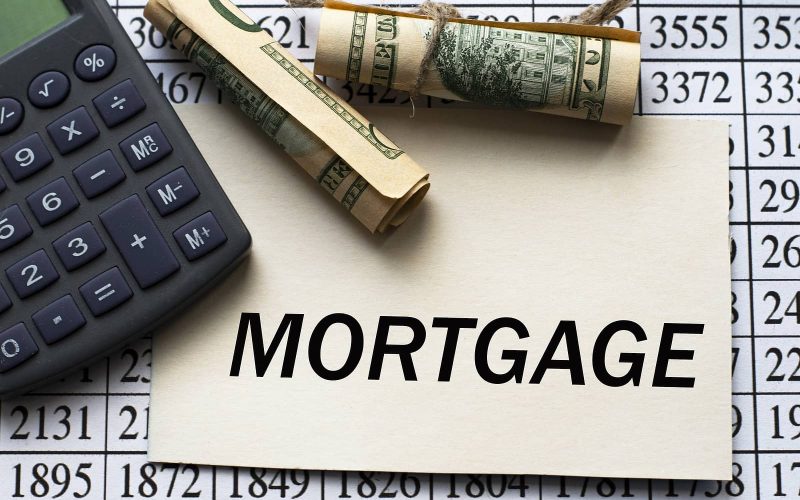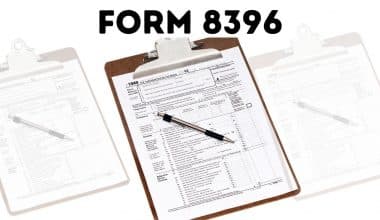If a buyer is unable to obtain a conventional loan, it can be difficult for both the buyer and the seller to complete the transaction. While the scenario may appear hopeless, both parties may be able to conclude the agreement using another financing source. Let’s show you how with wraparound mortgage example in Texas as well as how to calculate with a mortgage calculator.
Wraps, which are a type of seller financing, have the effect of lowering the obstacles to real estate ownership. While also speeding up the home-buying process.
What is Wraparound Mortgage?
A wraparound mortgage is a type of seller financing in which a buyer signs a mortgage with the seller rather than applying for a traditional bank loan. After that, the seller assumes the role of the bank and accepts payments from the new property owner. The interest rate charged on most seller-financed loans will contain a spread, giving the seller more profit.
Wraparound mortgages are usually more profitable to the seller. This is largely due to the fact that sellers can ask for a greater interest rate than the one on their current mortgage loan. As a result, as long as their purchasers continue to make their higher-interest-rate payments on schedule, they can make a good profit.
Wraparound Mortgage Definition
A buyer purchases a home with the help of a mortgage lender in a conventional real estate transaction. The proceeds of the sale are then used to pay off the seller’s existing mortgage on the property.
With a wrap-around mortgage, the seller keeps the existing mortgage on the house, and offers the buyer-seller financing. The seller also wraps the buyer’s loan into the existing mortgage. The seller assumes the position of the lender in this case. They both will agree on a down payment and loan amount. They will both sign a promissory note outlining the mortgage terms, and then the buyer receives the title and deed. Despite continuing to make payments on the original mortgage, the seller no longer owns the property.
The buyer makes a monthly mortgage payment to the seller, while the seller keeps making payments to their original lender. The wrap-around mortgage functions as a junior lien or second mortgage. The original lender can still foreclose on the house if the seller fails to pay the existing mortgage.
The seller often pays off the original mortgage with the proceeds from the sale. Due to the fact that most wrap-around mortgages have higher interest rates than traditional mortgages. The seller will usually profit from the second loan.
Read Also: REAL ESTATE SALES: Step by Step Guide To The Sales Process
An example is the best way to describe a wraparound mortgage. The following is a simplified illustration of a standard real estate transaction: Seller (“S”) wants to sell their home, which is currently financed. Buyer (“B”) desires to purchase S’s home and seeks a loan from a bank or other lending institution. B sends S a down payment when their loan is authorized. The bank of B then pays off S’s outstanding mortgage, leaving S with the balance. S’s mortgage is paid off, and B now owns the house. Of course, the new mortgage he acquired from the bank is a condition.
A normal transaction, on the other hand, looks like this: S wants to sell his house, while B wants to buy one. B makes S a down payment and delivers S a promissory note for the remainder of the purchase price instead of asking for a bank loan. B now owns the house, but only under the terms of his promissory note to S. S’s previous mortgage, as well as B’s new mortgage, is still owed on the home. Every month, B repays S on his promissory note, and S repays his initial mortgage to his bank. As a result, B’s debt has encircled S’s original mortgage.
Wraparound Mortgage Example
Let’s say you want to get $225,000 for your house. You still owe $50,000 on your mortgage when you place your house on the market.
Afterwords you locate purchasers who are willing to pay $225,000 for your home but are unable to obtain a loan from a standard mortgage institution. You might be able to clinch the deal with a wraparound mortgage.
To begin, check with your mortgage lender to see if you are eligible for a wraparound agreement. When you sell your property, many lenders demand you to pay them in one single payment. Your lender may authorize a wraparound agreement if your loan is assumable — that is if a buyer can take over your mortgage.
Your purchasers may then put down a $10,000 deposit and borrow the remaining $215,000 of your sales price from you, the seller, via a wraparound mortgage. You make monthly payments to your mortgage lender until you pay off the $50,000 you still owe, which is when the buyers make their monthly installments.
The difference between what the buyer pays you and the amount you use to pay off your original mortgage will eventually be yours to retain. However, this wraparound mortgage example can be applicable to all situations.
Wraparound Mortgage in Texas
A wraparound mortgage is a type of seller financing that is unique. It gives an alternative to the typical property transaction for both sellers and buyers. A wraparound mortgage is a legitimate kind of seller financing in Texas, and they’re frequently used when a buyer can’t get a good deal on standard financing from a bank or other lending organization.
In Texas, “wrap loans” or a wraparound mortgage is permissible. When done properly, a home can be sold with a lien remaining attached. A wrap lender is used by the buyer to obtain a second, higher-interest loan that “wraps” around the first. The wrap lender’s plan is to pay off both loans over time with the higher interest payments from the second loan.
However, in a wrap scam, a predatory lender buys a home with a lien from a desperate seller but does not use the increased payments to pay off the previous debt after buying the home under a wrap loan.
Because payments on the first lien are never fulfilled, or because the first lien contains a “due on sale” condition that permits the original lender to demand prompt payment of the whole principal if the house is sold, the result for the new buyer is often foreclosure and loss of the home. In the meantime, the original seller’s credit may be harmed for the same reasons.
Wraparound Mortgage Calculator
There are so many information and interactive calculators online that are available to you solely as self-help tools for your own use. A Wraparound mortgage calculator can not constitute investment or tax advice. So, we cannot promise you that a wraparound mortgage calculator will be applicable or accurate in your specific situation. All of the examples are hypothetical and meant to be used as examples only. Regarding all personal finance difficulties, we recommend that you obtain specialized counsel from qualified professionals. A professional can help your situation better than a wraparound mortgage calculator.
Advantages of Wrap-Around Mortgages
One reason a seller may agree to a wrap-around mortgage is to generate a profit. These types of loans can also assist sellers who are having problems selling their homes. It broadens the buyer pool by making the property accessible to those who do not qualify for a conventional mortgage.
This form of loan can be more flexible and easier to qualify for, allowing purchasers to acquire a house that would otherwise be impossible.
Risks Involved With Wrap-Around Mortgages
Although a wrap-around mortgage can be advantageous for both parties, there are dangers to consider before entering into this sort of deal.
It is prudent for both parties to deal with an experienced real estate attorney, who can guide them through the process and decrease the risk for both parties.
For Buyers
As previously noted, the initial mortgage remains the primary loan. The wrap mortgage is a subordinate lien. This means that if the seller stops making payments and defaults on the existing mortgage, the original lender can foreclose on the mortgaged property and take it away from the new buyer, even though the buyer has made timely payments to the seller.
Buyers can mitigate this risk by making payments directly to the original lender if the terms of their loans let it.
For Sellers
First, the legal danger exists. If the seller has an existing mortgage, particularly one that is still somewhat high, the primary lender must approve this secondary loan.
Most lenders demand the loan to be paid in full upon the sale and transfer of ownership of the property. This would eliminate the possibility of a mortgage wraparound. Before negotiating the conditions of the loan or sale, sellers must examine their original loan documentation to ensure they are even eligible to engage in this type of real estate transaction.
Once they are confident they can proceed with a wrap-around mortgage, they are solely responsible for paying off the old mortgage. If the buyer stops paying payments, the seller must continue making the initial mortgage payment using their own funds.
Various Alternatives Options To Wrap-Around Loans
If you have difficulty qualifying for a traditional loan as a buyer or finding qualified purchasers as a seller, there may be other types of mortgage loans that can help.
#1. FHA Loans
FHA loans can be an excellent alternative for qualified homebuyers with lower credit scores or limited closing funds, as these loans have lower down payment and credit score criteria than other loans and frequently allow closing costs to be financed.
#2. VA Loans
VA loans for qualifying active-duty military members or veterans can assist buyers without a down payment. These loans are among the few without a requirement for a down payment. Additionally, these loans have often cheaper interest rates and do not require private mortgage insurance (PMI).
#3. USDA Loans
Without needing a down payment, USDA loans make acquiring a property in a suitable rural location more affordable. This loan option typically features a cheaper interest rate and less expensive PMI, both of which can be rolled into the loan amount.
Conclusion
The risk associated with wrap-around mortgages may not be worthwhile. In a wrap-around mortgage situation, the seller provides the buyer with a mortgage, which is then rolled into the seller’s current mortgage. The buyer acquires ownership of the property and makes mortgage payments to the seller, including interest. This payment is used to pay off the seller’s existing mortgage to the original lender.
Depending on the terms of the loan, the seller may earn a profit from the difference between the two payments made to them and their lender. This is often accomplished by the seller charging a higher interest rate on the wrap-around mortgage than on the initial mortgage.
This loan may be advantageous for both parties, but it comes with a number of hazards. The buyer and seller should cooperate with an experienced real estate attorney to mitigate these risks.
The majority of homes are acquired with conventional financing. If you’re in the market for a new home and you’re prepared to get a mortgage with less risk from a trustworthy lender, get pre-approved with Rocket Mortgage® to start the home purchasing process.
Frequently Asked Questions
Is a wrap-around mortgage legal?
Wrap-around mortgages are generally considered legal.
Who is responsible for a wraparound loan?
A seller accepts a secured promissory note from a buyer for the underlying mortgage balance plus an amount up to the remaining purchase money balance under a wrap. The new buyer pays the seller on a monthly basis, and the seller is then responsible for paying the underlying mortgagee (s).
What is a wraparound deed?
A wrap-around mortgage, sometimes known as a “wrap,” is a type of second mortgage used to finance the purchase of real estate. The seller gives the buyer a junior mortgage that wraps around the property and is in addition to any superior mortgages already in place.






